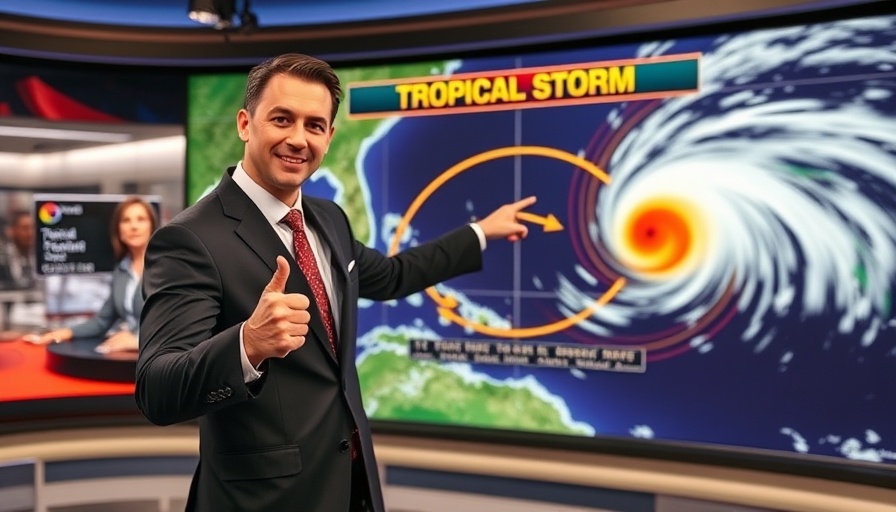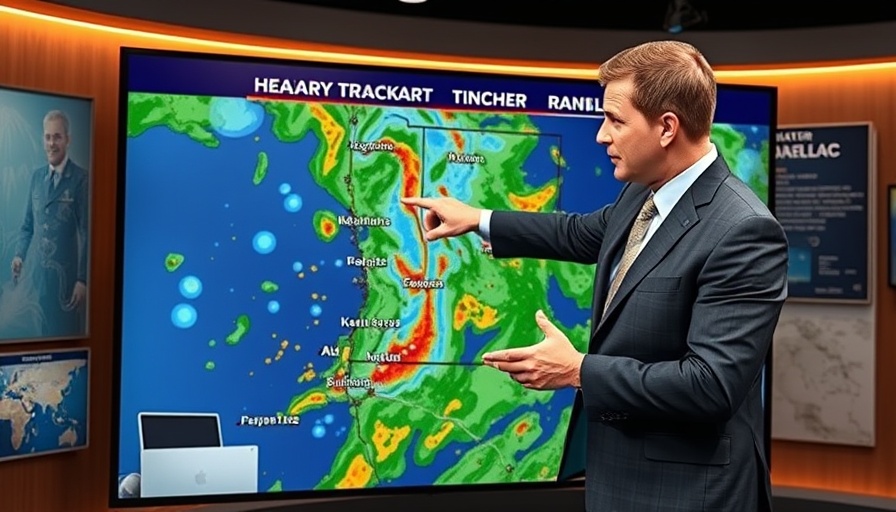
Dangerous Heat in Central Florida: What You Need to Know
The recent weather update for Central Florida has been nothing short of alarming, with temperatures climbing dangerously high and heat advisories issued across the region. As reported, the heat will persist all the way through Wednesday, with highs nearing the 98-degree mark. This extreme weather is not merely a local phenomenon, as nearly half of the U.S. is experiencing similar heat advisories, affecting over 160 million Americans.
The video titled 'Impact Weather - Dangerous Temperatures Prompt Heat Advisories in Central Florida' sheds light on the current challenges faced due to rising temperatures, prompting a deeper analysis of its implications.
As we examine this alarming situation, it's crucial to understand why these temperatures are soaring. High-pressure systems, likened to a ‘pressure cooker’ effect, are creating conditions that keep the heat trapped in the region, leading to sweltering feel-like temperatures soaring around 110 degrees. It's important to recognize that July is traditionally the hottest month in Florida, and current forecasts indicate that these temperatures are set to peak, raising concerns about public health, especially for vulnerable populations.
The Human Impact of Heat Waves
When extreme heat like this occurs, it poses serious health risks, particularly for young children, the elderly, and those with pre-existing health conditions. Officials encourage local residents to stay hydrated and avoid outdoor activities during peak hours. Communities must come together to support one another, primarily through well-publicized public cooling centers and increased vigilance regarding the well-being of at-risk groups.
Understanding the Science Behind the Weather
High-pressure systems can have drastic effects on local weather patterns, trapping heat close to the earth's surface. This effect is exacerbated in urban areas, where buildings and asphalt absorb and re-radiate heat, which creates what is known as the "urban heat island effect." Understanding this dynamic is vital for residents and policymakers alike, as it highlights the importance of green spaces and climate-responsive urban planning.
Future Outlook and Climate Connection
Predicting the trajectory of this heat wave involves looking beyond immediate forecasts. Long-term climate change patterns suggest that such periods of intense heat will likely become more frequent and severe. As temperatures rise annually, proactive measures in infrastructure and community preparedness must be prioritized to mitigate risks associated with extreme weather.
Precautionary Measures: A Community Response
The weather forecast raises a critical question: How prepared is Central Florida to combat extreme heat? Public health campaigns that emphasize awareness, healthy habits during peak heat hours, and availability of emergency resources should be amplified. Local governments and community organizations must collaborate closely to ensure equitable access to cooling centers and resources for all residents.
Heat advisories signal more than just discomfort; they indicate a need for immediate action. Neighborhood watch programs can foster engagement among residents, ensuring that vulnerable populations receive support and resources, thereby promoting a sense of responsibility and care within communities.
Moreover, events—even sports games—should consider weather adjustments to prioritize safety. Instead of allowing heat-related issues to dominate summer activities, communities can turn this challenge into an opportunity to motivate behavioral changes that focus on health.
Conclusion: The Time for Action is Now
As extreme heat becomes our immediate reality, our response will define not just our comfort but our well-being and survival. In Central Florida, understanding the implications of dangerous temperatures is crucial for fostering a resilient community. While the weather forecast for Central Florida shows hazardous conditions that will continue through midweek, proactive engagement from local authorities and residents can make all the difference.
 Add Row
Add Row  Add
Add 




Write A Comment